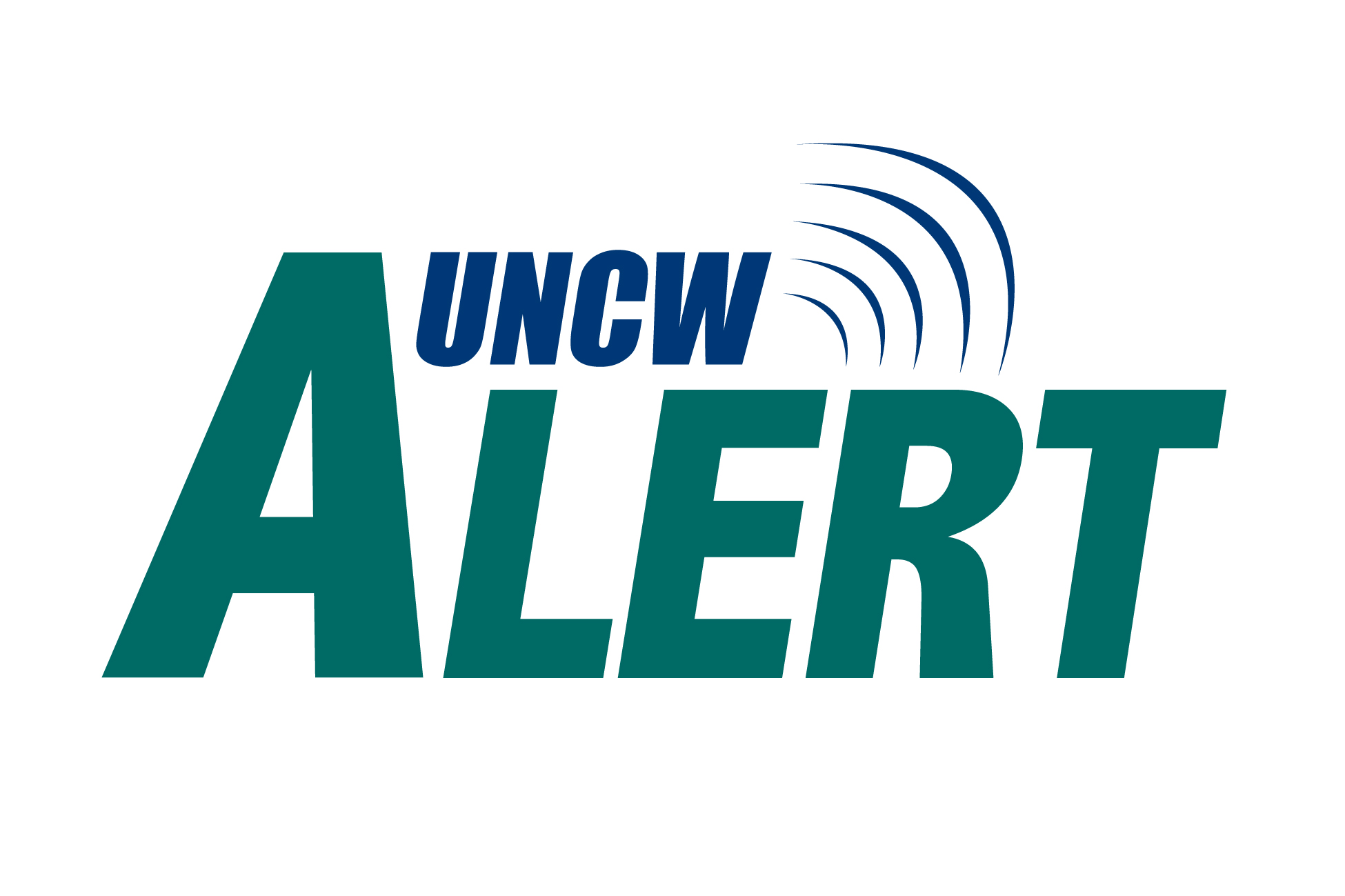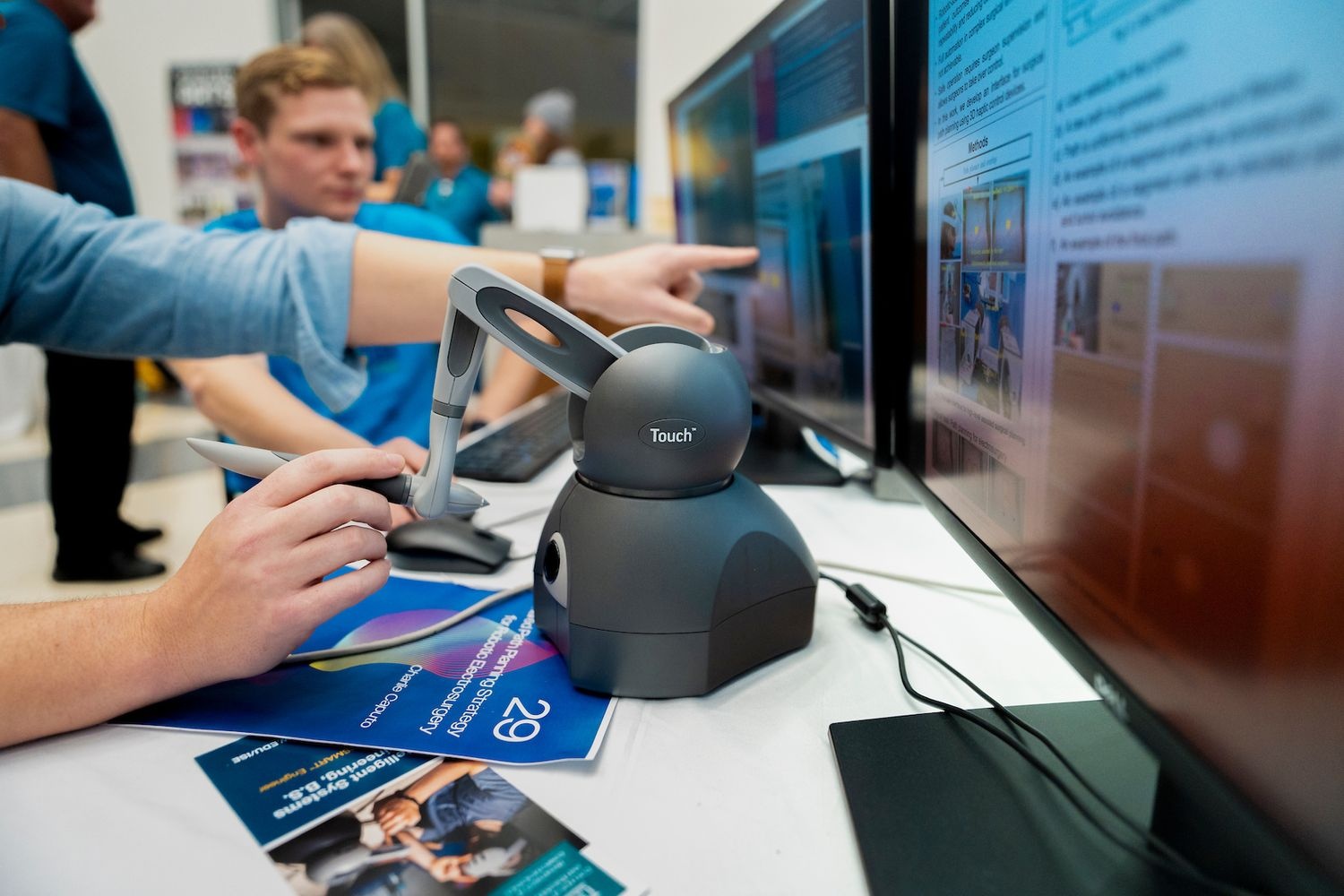News
Recent Posts
Art Alum Returns to Wilmington for Solo Exhibit
Meredith Connelly ’11 reconnected with UNCW Art & Art History faculty and students when setting up for a solo exhibition at the Cameron...
UNCW Establishes Jerry Wainwright Scholarship
Men's basketball coaching icon Jerry Wainwright, who put UNCW's program on the map in early 2000s, is being recognized with the...
Program Piloted by UNCW, ECU Receives UNC System Award
An innovative, interdisciplinary, intercollegiate research training program spearheaded by UNCW has received an Undergraduate Research Program Award.
Chancellor Volety Appointed to AASCU Board of Directors
Chancellor Aswani K. Volety has been appointed to the Board of Directors at the American Association of State Colleges and Universities (AASCU), a...
Chris King Named NC Outstanding New Professional
Chris King, a residence coordinator for the UNC Wilmington Department of Housing and Residence Life has been recognized by North Carolina...
Update: Bomb Threat Unfounded
Following a thorough investigation by UNCW Police in coordination with local, state and federal law enforcement agencies, the bomb threat submitted...
Notice: Investigating Unsubstantiated Bomb Threat to Campus
The university has been made aware of a bomb threat that was submitted through the feedback form on the UNCW website. At this time, based on...
UNCW, Military Partners Dispel False Social Media Claims
UNCW has been working in collaboration with officials at the Marine Corps Base Camp Lejeune in Jacksonville, North Carolina, and local law...
UNCW Researchers Produce Award-Winning Documentary
A UNCW research expedition to Greenland is the focus of an award-winning feature documentary that premiered at the Raw Science Film Festival in New...
Chancellor Selected as 2025 WilmingtonBiz Power Player
UNCW Chancellor Aswani Volety is among several Seahawk faculty, staff and alumni making a lasting impact in southeastern North Carolina, according...
Veterans Week Takes Flight Nov. 7-11
UNCW is proud to announce a thrilling and symbolic start to its annual Veterans Week celebration and Fitness Expo with a high-impact landing by an...
D.C. Virgo Celebrates 60 Years of Legacy
Students at D.C. Virgo celebrated 60 years honoring their namesake, David Clarke Virgo, during the school’s first Legacy Day!
Message From SafeZone: UNCW Weather Notice: Rip Currents Hazard
Dangerous rip currents expected at area beaches due to Hurricane Melissa in the Caribbean. Avoid swimming. Check beach flags & stay updated via...
Update: Nov. 6 UNCW Alert System Test Postponed
Update: Nov. 6 UNCW Alert System Test Postponed
BOT to Hold Quarterly Meetings Oct. 30-31
BOT to Hold Quarterly Meetings Oct 30 31
UNCW Safety Notice: Student Organization Event on Oct. 15
UNCW understands an upcoming event sponsored by a registered student organization has generated concern among some Seahawks.
CIE and OIC Drive Change Through Innovation and Collaboration
UNCW's CIE and OIC continue to drive progress through research, commercialization, startup support and strategic partnerships.
UNCW Update: Dare to Learn Lecture on Oct. 13
UNCW will host former Vice President Mike Pence on campus Oct. 13 as the featured speaker for this year’s Dare to Learn Lecture. The event...
BOT to Participate in UNC Board of Governors Workshop
BOT to Participate in UNC Board of Governors Workshop
Researcher Leads Effort to Eliminate Malaria in Uganda
Michelle Cathorall leads the Malaria Mastery Prevention Program, a community-driven project aimed at eliminating malaria in Uganda.
Spirit Rocks Reservation System to Open October 6
On Monday, Oct. 6, at 8 a.m. UNCW will lift the temporary pause on the use of campus spirit rocks and designated freedom of expression...
Fawell to Explore Imperial History in Sherman Lecture
UNCW’s Department of History will host historian Charles Begue Fawell, visiting assistant professor at Williams College, as the 24th annual...
Research and Innovation Celebrates Excellence at Annual Reception
Research and Innovation Celebrates Excellence at Annual Reception
Weather Alert: Closing Out Updates on Tropical Storm Imelda
Based on forecasts from the National Weather Service Wilmington, Tropical Storm Imelda is headed out to sea.
UNCW to Remain Open Under Normal Operations
UNCW will remain on a normal operating schedule for Monday, Sept. 29. No classes or campus events are cancelled at this time.
UNCW Continues to Celebrate Family Weekend, Watch Tropical Weather
While students, parents and families enjoy Family Weekend, campus officials continue to maintain a close watch over tropical weather conditions.
2025 Million Dollar Club Announced; Bingham Tops $5M
Research & Innovation announced a record number of 2025 Million Dollar Club Inductees and recognized Frederick Bingham as a $5 Million Dollar...
UNCW Introduces Career Focused AI Certificate Program
In Fall 2025, UNCW is introducing a certificate program available to all undergraduate students in Artificial Intelligence Literacy to ensure...
TEAL-SHIPS Cruise Advances Hurricane Forecasting
The UNCW-led TEAL-SHIPS collaborative research project deployed drifter instruments during its recent offshore cruise, capturing data ahead of...
UNCW Partners with Novant On Nursing Pipeline Program
UNCW and Novant have launched the VITALS Program to prepare incoming students for careers in nursing and help address the healthcare workforce...
CIE to Host Third Annual Ocean Innovation Conference in September
Registration open for third annual Ocean Innovation Conference in September.
UNCW and Oak Island Launch Coastal Resiliency Partnership
The UNCW College of Science and Engineering is excited to announce a Memorandum of Understanding (MOU) with the Town of Oak Island. The partnership...
Celebrating 20 Years of Community Engagement
UNCW and the Town of St. James celebrate 20 years of partnership for shoreline preservation.
Protecting Beauty of Coral Reefs Provides Economic Benefits
Matthew McLean's recent study explores what makes a coral reef appear beautiful to the public.
Probiotics Show Promise in Slowing Coral Disease Impacting Caribbean Reefs
Assistant Professor Blake Ushijima co-authored a groundbreaking study revealing a bacterial probiotic can slow the spread of stony coral tissue...
Ricanek Receives Intellectual Property Grant
Karl Ricanek Jr., professor in the UNCW Department of Computer Science and director of the Institute for Interdisciplinary Identity Sciences (I3S),...
STEP-IN Partnership Creates Pathway for Teachers
UNCW is pleased to announce a partnership with six North Carolina Community Colleges that provides a pathway for students in rural areas to pursue...
CIE's McWhorter Elected to NC IDEA Board of Directors
Center for Innovation and Entrepreneurship Director Heather McWhorter has been elected to serve on the NC IDEA Foundation's Board of Directors.
UNCW Research Team Approved for NCInnovation Funding
A multidisciplinary team developing a Neck Strength Assessment Tool received NCInnovation funding, bringing the technology closer to market.
Clinical Psychology Doctoral Program Receives Full Accreditation
UNCW’s clinical psychology doctoral program has received full accreditation by the American Psychological Association Commission on...
Nooner Accepted into ELATES at Drexel Program
Kate Nooner, senior associate dean in the College of Science and Engineering and professor in the Department of Psychology, has been accepted into...
UNCW Names 2025 Research Achievement Awardees
UNCW Research & Innovation announced eight faculty researchers have been named recipients of the 2025 Research Achievement Awards.
UNC Wilmington School of Nursing Celebrates its 40th Anniversary
The College of Health and Human Services celebrated the 40th anniversary of the School of Nursing, marking the occasion with a special event on...
UNCW Wins Esports Championship
The UNCW Esports Valorant Team won the NECC Division IV Championship on April 7, their second championship this academic year!
Associate Professor Joseph Covi Among National Class of Emerging Inventors
Department of Biology and Marine Biology Associate Professor Joseph Covi is among 162 honorees recognized this year by the National Academy of...
Davis Receives Distinguished Scholar Award
Brian Davis, professor in the UNCW Department of Physics and Physical Oceanography, is the recipient of the 2025 Fainting Robin Foundation...
CSE Partnership Creates Pathway for Computer Science Students
The UNCW College of Science and Engineering is excited to announce a Memorandum of Understanding (MOU) with the Department of Systems Engineering...
UNCW Wins Esports Conference Championship
The UNCW Valorant Team clinched the National Esports Collegiate Conference Division V championship on Dec 4 with a finals win over the University...
Waity Selected as RTI University Scholar
Jill Waity, professor of sociology and chair of the UNCW Department of Sociology and Criminology, has been selected as one of four 2024-2025 RTI...
UNCW Introduces Art & Art Education Program
UNCW has introduced a bachelor’s to master’s combined program in Art and Art Education. The program enables students to earn a...
WCE Introduces MAT in Special Education
UNCW’s Watson College of Education has introduced a new Master of Arts in Teaching in Special Education. Applications are open for the first...
UNCW Doctoral Student Receives NOSAMS Funding
UNCW applied coastal and ocean sciences doctoral student, Chris Blanco, has been awarded over $10,000 in radiocarbon analyses by the National Ocean...
Team to Participate in National Undergraduate Research Program
A team from UNC Wilmington’s College of Health and Human Services and the College of Science and Engineering has been accepted into the...
Gessner Named Kenan Distinguished Professor
Creative writing professor and lauded environmental writer David Gessner has been awarded the Thomas S. Kenan III Distinguished Professorship in...
UNCW Alumni Receive Pharmaceutical Chemistry Fellowships
Three UNCW alumni have been awarded fellowships in the Department of Chemistry and Biochemistry’s Pharmaceutical Chemistry doctoral program....
Almeida Receives 2024 RCSA Cottrell SEED Award
Paulo Almeida, professor in the UNCW Department of Chemistry and Biochemistry, is the recipient of a Research Corporation for Science Advancement...
Nooner and Patterson Named CSE Associate Deans
Kate Brody Nooner and Laurie J. Patterson have been named associate deans in the College of Science and Engineering.
UNCW Receives Funding for Nursing Education
The UNCW College of Health and Human Services, which includes the School of Nursing, recently received more than $2.4 million from the University...
Gloria Monroe Named SBTDC Director
The Small Business and Technology Development Center (SBTDC) at UNCW has named Gloria Monroe as the new center director.
UNCW Receives NIH Grant
UNCW has received a $452,750 grant from the National Institutes of Health to further animal behavior research and explore the possibility of...



















































